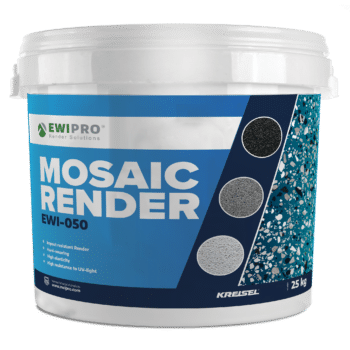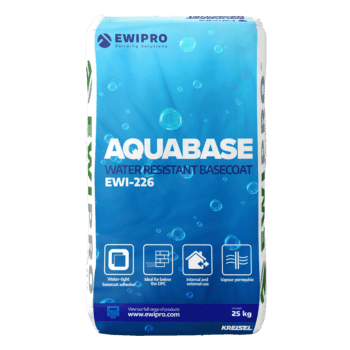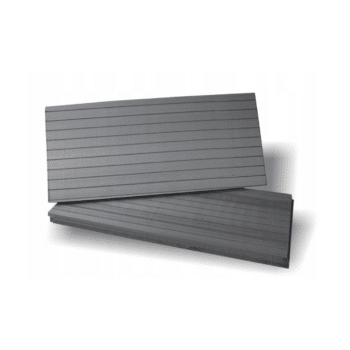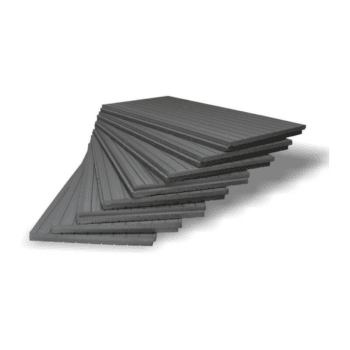4.8 out of 5 Stars on TrustPilot
Insulation and Damp Proofing
Insulation and damp proofing are two indispensable aspects of any residential or commercial building construction or renovation process. They are essential for enhancing energy efficiency, preventing structural damage, and creating a comfortable indoor environment. In this blog post, we will delve into both subjects and provide some practical tips for achieving effective insulation and damp proofing in your home.
What is insulation?
Insulation refers to materials or substances used to reduce the rate of heat transfer. By installing insulation, you can keep your building warm during the winter and cool during the summer, thereby reducing energy consumption and the associated costs. Apart from the thermal benefits, insulation also provides noise reduction and fire resistance.
There are several types of insulation available in the market. They include batts and rolls, blown-in insulation, spray foam insulation, and rigid foam insulation, among others. The choice depends on several factors including your building design, climate, energy-saving goals, and budget.
What is damp proofing?
Damp proofing is a series of methods and treatments used to prevent moisture from seeping into a building, whether through the walls, floor, or basement. The accumulation of moisture within a building can lead to several issues. These include mould growth, structural damage, and a decrease in thermal efficiency. It can also cause health problems for occupants due to increased allergens and poor air quality.
There are several types of dampness that can affect a building, and different types of dampness require different treatments. Here are the main ones:
- Rising Damp: This occurs when water from the ground rises up through the walls of a building due to capillary action. The water carries salts that can deteriorate plaster and paint, causing them to peel off.
- Penetrating Damp: This type of dampness is caused by water leaking through walls. It’s often a problem in older buildings with solid walls. It can also occur in buildings located in areas with severe weather conditions.
- Condensation: This is the most common type of dampness. It occurs when moist air comes into contact with a cold surface, such as a wall or window, causing water to be released onto that surface.
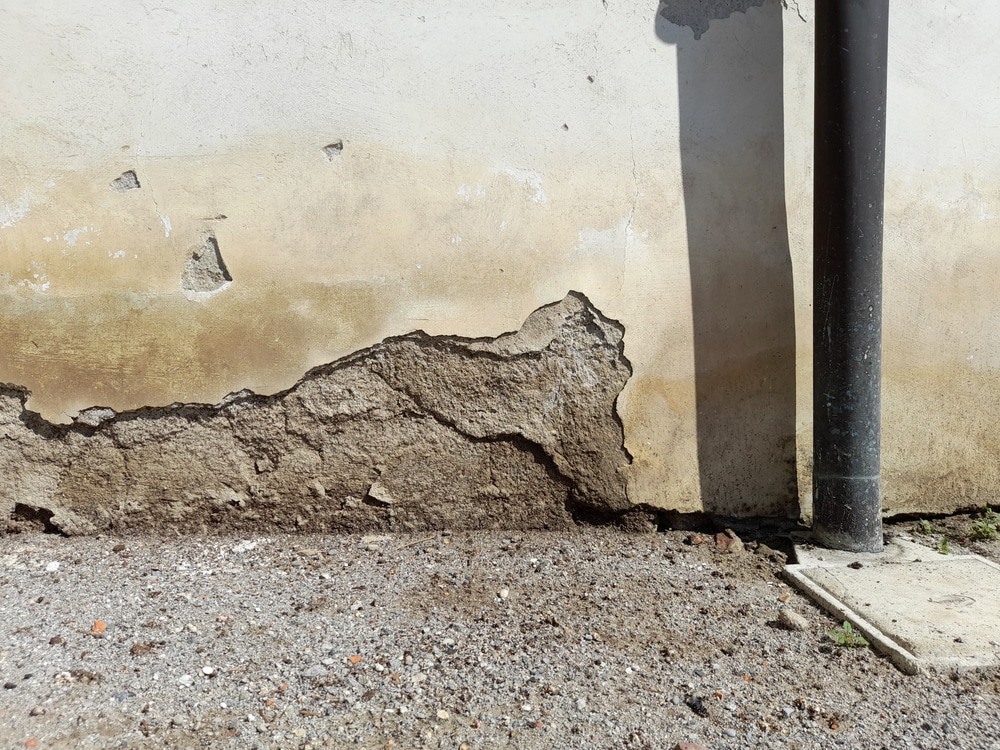
Damp proofing methods
Damp-proofing methods differ based on the type of dampness and the nature of the building. Here are a few commonly used methods:
- Damp Proof Course (DPC): This is a horizontal barrier inserted in the structure of a building, usually at the base level, to prevent rising dampness. The materials used for DPC include slate, bitumen, plastic or specially engineered bricks.
- Damp Proof Membrane (DPM): This is a membrane material applied to floors to prevent dampness from ground level from reaching the building. The material is usually a polymer formed into a flexible sheet.
- Cavity Wall Construction: This technique is used in the construction of new buildings to prevent penetrating dampness. The wall is constructed with a hollow space between two ‘skins’ of masonry, which prevents water from moving from the outer to the inner walls.
- Chemical Injection: In this method, a water-repellent chemical is injected into the walls to create a water-repelling layer, acting as a damp-proof course.
- Ventilation: Proper ventilation helps prevent condensation. This can be done through extractor fans in bathrooms and kitchens, or by maintaining an adequate air gap between insulation and the building structure.
It’s worth noting that damp proofing is best handled by professionals. They can diagnose the type of dampness affecting your property and recommend the most effective treatment.
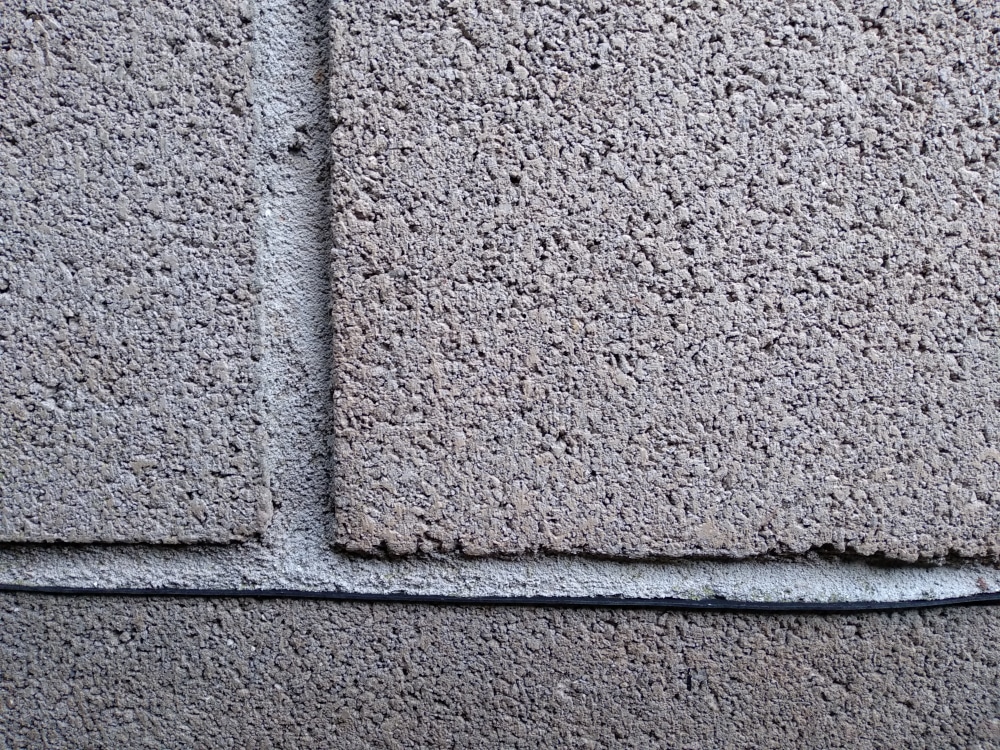
Relationship between insulation and damp proofing
Understanding the relationship between insulation and damp proofing is crucial in ensuring the long-term health and comfort of your home or office building. Both insulation and damp proofing are protective measures, but their functions differ. Insulation primarily focuses on preventing heat transfer. Therefore, it keeps the interior of the building warm in winter and cool in summer. Damp proofing, on the other hand, aims to prevent moisture intrusion into the building.
When installed properly, both insulation and damp proofing work harmoniously to create an energy-efficient, healthy, and comfortable indoor environment. However, if not carefully planned and executed, the two can conflict. This leads to problems that might compromise the integrity and safety of the structure. Here’s how:
Moisture Trapped in Insulation
Poorly executed insulation can trap moisture, which then leads to dampness. This usually happens when a vapour barrier is incorrectly installed on the cooler side of an insulation layer.
When the warm, moist air from inside the building makes contact with the cooler insulation layer, condensation occurs, leading to dampness. The dampness can then cause multiple issues, such as mould growth, decreased insulation effectiveness, structural damage, and a potentially unhealthy indoor environment.
Insulation Affecting Damp Proof Course (DPC)
When installing insulation within a wall cavity, care must be taken not to bridge the damp-proof course or create a situation where moisture can bypass the DPC, leading to a risk of rising dampness.
In buildings where insulation is being retrofitted, an improperly installed insulation material could potentially disrupt an existing DPC or make it ineffective. This could, over time, lead to rising damp issues that could be quite costly to rectify.
XPS insulation and mosaic render can be used together to form a robust solution for insulation and damp proofing. Using XPS insulation below the Damp Proof Course (DPC) and finishing with a mosaic render system offers a combination of thermal resistance, water resistance, and aesthetics.
XPS, or extruded polystyrene, is a type of rigid foam insulation with a closed-cell structure. This type of insulation offers excellent water resistance and thermal performance. This makes it an ideal choice for use below ground level, where moisture exposure is inevitable.
The moisture-resistant properties of XPS allow it to prevent water ingress while its insulation characteristics help in limiting heat loss. When installed below the DPC, it provides a continuous insulation layer that bridges the thermal gap between the interior and exterior of a building.
A mosaic render is a type of decorative finish that’s usually used for external wall insulation systems. It involves applying small pieces (mosaics) of coloured glass, stone, or ceramics to create a decorative, durable, and weather-resistant finish.
Mosaic render isn’t just decorative. It also provides a robust, durable surface that can withstand weathering and wear, making it ideal for use in areas exposed to moisture or those that require additional protection.
-
Mosaic Render (EWI-050) – 25kg
From £102.26 Incl. VATFrom £85.22 Excl. VAT -
Aquabase (EWI-226) – 25kg
£22.97 Incl. VAT£19.14 Excl. VAT£28.70 Incl. VAT£23.92 Excl. VAT -
XPS Insulation (1 board)
From £10.20 Incl. VATFrom £8.50 Excl. VAT
Thermal Bridging
Thermal bridging occurs when there is a significant difference in thermal resistance between the materials in a building. It’s essentially a “shortcut” for heat transfer, reducing the overall efficiency of the insulation. If damp proofing is not effectively integrated with insulation, thermal bridges can be created. This leads to condensation issues, mould growth, and a decrease in the building’s overall thermal performance.
Facebook
Twitter
LinkedIn
Your cart
Trade Account Login

We use cookies on our website to give you the most relevant experience by remembering your preferences and repeat visits. By clicking “Accept All”, you consent to the use of ALL the cookies. However, you may visit "Cookie Settings" to provide personalised consent.
Manage consent
Privacy Overview
This website uses cookies to improve your experience while you navigate through the website. Out of these, the cookies that are categorized as necessary are stored on your browser as they are essential for the working of basic functionalities of the website. We also use third-party cookies that help us analyze and understand how you use this website. These cookies will be stored in your browser only with your consent. You also have the option to opt-out of these cookies. But opting out of some of these cookies may affect your browsing experience.
Necessary cookies are absolutely essential for the website to function properly. These cookies ensure basic functionalities and security features of the website, anonymously.
| Cookie | Duration | Description |
|---|---|---|
| __stripe_mid | 1 year | This cookie is set by Stripe payment gateway. This cookie is used to enable payment on the website without storing any patment information on a server. |
| __stripe_sid | 30 minutes | This cookie is set by Stripe payment gateway. This cookie is used to enable payment on the website without storing any patment information on a server. |
| _GRECAPTCHA | 5 months 27 days | This cookie is set by the Google recaptcha service to identify bots to protect the website against malicious spam attacks. |
| apbct_cookies_test | session | CleanTalk sets this cookie to prevent spam on comments and forms and act as a complete anti-spam solution and firewall for the site. |
| apbct_page_hits | session | CleanTalk sets this cookie to prevent spam on comments and forms and act as a complete anti-spam solution and firewall for the site. |
| apbct_prev_referer | session | Functional cookie placed by CleanTalk Spam Protect to store referring IDs and prevent unauthorized spam from being sent from the website. |
| apbct_site_landing_ts | session | CleanTalk sets this cookie to prevent spam on comments and forms and act as a complete anti-spam solution and firewall for the site. |
| apbct_site_referer | 3 days | This cookie is placed by CleanTalk Spam Protect to prevent spam and to store the referrer page address which led the user to the website. |
| apbct_timestamp | session | CleanTalk sets this cookie to prevent spam on comments and forms and act as a complete anti-spam solution and firewall for the site. |
| apbct_urls | 3 days | This cookie is placed by CleanTalk Spam Protect to prevent spam and to store the addresses (urls) visited on the website. |
| AWSALBCORS | 7 days | This cookie is managed by Amazon Web Services and is used for load balancing. |
| cookielawinfo-checkbox-advertisement | 1 year | Set by the GDPR Cookie Consent plugin, this cookie is used to record the user consent for the cookies in the "Advertisement" category . |
| cookielawinfo-checkbox-analytics | 11 months | This cookie is set by GDPR Cookie Consent plugin. The cookie is used to store the user consent for the cookies in the category "Analytics". |
| cookielawinfo-checkbox-functional | 11 months | The cookie is set by GDPR cookie consent to record the user consent for the cookies in the category "Functional". |
| cookielawinfo-checkbox-necessary | 11 months | This cookie is set by GDPR Cookie Consent plugin. The cookies is used to store the user consent for the cookies in the category "Necessary". |
| cookielawinfo-checkbox-others | 11 months | This cookie is set by GDPR Cookie Consent plugin. The cookie is used to store the user consent for the cookies in the category "Other. |
| cookielawinfo-checkbox-performance | 11 months | This cookie is set by GDPR Cookie Consent plugin. The cookie is used to store the user consent for the cookies in the category "Performance". |
| ct_checkjs | session | CleanTalk–Used to prevent spam on our comments and forms and acts as a complete anti-spam solution and firewall for this site. |
| ct_fkp_timestamp | session | CleanTalk sets this cookie to prevent spam on the site's comments/forms, and to act as a complete anti-spam solution and firewall for the site. |
| ct_pointer_data | session | CleanTalk sets this cookie to prevent spam on the site's comments/forms, and to act as a complete anti-spam solution and firewall for the site. |
| ct_ps_timestamp | session | CleanTalk sets this cookie to prevent spam on the site's comments/forms, and to act as a complete anti-spam solution and firewall for the site. |
| ct_sfw_pass_key | 1 month | CleanTalk sets this cookie to prevent spam on comments and forms and act as a complete anti-spam solution and firewall for the site. |
| ct_timezone | session | CleanTalk–Used to prevent spam on our comments and forms and acts as a complete anti-spam solution and firewall for this site. |
| elementor | never | This cookie is used by the website's WordPress theme. It allows the website owner to implement or change the website's content in real-time. |
| viewed_cookie_policy | 11 months | The cookie is set by the GDPR Cookie Consent plugin and is used to store whether or not user has consented to the use of cookies. It does not store any personal data. |
Functional cookies help to perform certain functionalities like sharing the content of the website on social media platforms, collect feedbacks, and other third-party features.
| Cookie | Duration | Description |
|---|---|---|
| __zlcmid | 1 year | This cookie is used by Zendesk live chat and is used to store the live chat ID. |
| bcookie | 2 years | LinkedIn sets this cookie from LinkedIn share buttons and ad tags to recognize browser ID. |
| bscookie | 2 years | LinkedIn sets this cookie to store performed actions on the website. |
| lang | session | LinkedIn sets this cookie to remember a user's language setting. |
| lidc | 1 day | LinkedIn sets the lidc cookie to facilitate data center selection. |
| UserMatchHistory | 1 month | LinkedIn sets this cookie for LinkedIn Ads ID syncing. |
Performance cookies are used to understand and analyze the key performance indexes of the website which helps in delivering a better user experience for the visitors.
| Cookie | Duration | Description |
|---|---|---|
| __utma | 2 years | This cookie is set by Google Analytics and is used to distinguish users and sessions. The cookie is created when the JavaScript library executes and there are no existing __utma cookies. The cookie is updated every time data is sent to Google Analytics. |
| __utmb | 30 minutes | Google Analytics sets this cookie, to determine new sessions/visits. __utmb cookie is created when the JavaScript library executes and there are no existing __utma cookies. It is updated every time data is sent to Google Analytics. |
| __utmc | session | The cookie is set by Google Analytics and is deleted when the user closes the browser. It is used to enable interoperability with urchin.js, which is an older version of Google Analytics and is used in conjunction with the __utmb cookie to determine new sessions/visits. |
| __utmt | 10 minutes | Google Analytics sets this cookie to inhibit request rate. |
| __utmv | 2 years | The __utmv cookie is set on the user's device, to enable Google Analytics to classify the visitor. |
| __utmz | 6 months | Google Analytics sets this cookie to store the traffic source or campaign by which the visitor reached the site. |
| sib_cuid | 6 months | Purechat uses this cookie to send data to purechat.com, to connect visitors to the reservation team and track visitors to stay on portal. |
| SRM_B | 1 year 24 days | Used by Microsoft Advertising as a unique ID for visitors. |
Analytical cookies are used to understand how visitors interact with the website. These cookies help provide information on metrics the number of visitors, bounce rate, traffic source, etc.
| Cookie | Duration | Description |
|---|---|---|
| _ga | 2 years | The _ga cookie, installed by Google Analytics, calculates visitor, session and campaign data and also keeps track of site usage for the site's analytics report. The cookie stores information anonymously and assigns a randomly generated number to recognize unique visitors. |
| _gat_gtag_UA_61069204_2 | 1 minute | Set by Google to distinguish users. |
| _gat_UA-61069204-2 | 1 minute | A variation of the _gat cookie set by Google Analytics and Google Tag Manager to allow website owners to track visitor behaviour and measure site performance. The pattern element in the name contains the unique identity number of the account or website it relates to. |
| _gcl_au | 3 months | Provided by Google Tag Manager to experiment advertisement efficiency of websites using their services. |
| _gid | 1 day | Installed by Google Analytics, _gid cookie stores information on how visitors use a website, while also creating an analytics report of the website's performance. Some of the data that are collected include the number of visitors, their source, and the pages they visit anonymously. |
| _uetsid | 1 day | This cookies are used to collect analytical information about how visitors use the website. This information is used to compile report and improve site. |
| CONSENT | 2 years | YouTube sets this cookie via embedded youtube-videos and registers anonymous statistical data. |
Advertisement cookies are used to provide visitors with relevant ads and marketing campaigns. These cookies track visitors across websites and collect information to provide customized ads.
| Cookie | Duration | Description |
|---|---|---|
| _fbp | 3 months | This cookie is set by Facebook to display advertisements when either on Facebook or on a digital platform powered by Facebook advertising, after visiting the website. |
| ANONCHK | 10 minutes | The ANONCHK cookie, set by Bing, is used to store a user's session ID and also verify the clicks from ads on the Bing search engine. The cookie helps in reporting and personalization as well. |
| fr | 3 months | Facebook sets this cookie to show relevant advertisements to users by tracking user behaviour across the web, on sites that have Facebook pixel or Facebook social plugin. |
| MUID | 1 year 24 days | Bing sets this cookie to recognize unique web browsers visiting Microsoft sites. This cookie is used for advertising, site analytics, and other operations. |
| NID | 6 months | NID cookie, set by Google, is used for advertising purposes; to limit the number of times the user sees an ad, to mute unwanted ads, and to measure the effectiveness of ads. |
| test_cookie | 15 minutes | The test_cookie is set by doubleclick.net and is used to determine if the user's browser supports cookies. |
| uuid | 6 months | MediaMath sets this cookie to avoid the same ads from being shown repeatedly and for relevant advertising. |
| VISITOR_INFO1_LIVE | 5 months 27 days | A cookie set by YouTube to measure bandwidth that determines whether the user gets the new or old player interface. |
| YSC | session | YSC cookie is set by Youtube and is used to track the views of embedded videos on Youtube pages. |
| yt-remote-connected-devices | never | YouTube sets this cookie to store the video preferences of the user using embedded YouTube video. |
| yt-remote-device-id | never | YouTube sets this cookie to store the video preferences of the user using embedded YouTube video. |
| yt.innertube::nextId | never | This cookie, set by YouTube, registers a unique ID to store data on what videos from YouTube the user has seen. |
| yt.innertube::requests | never | This cookie, set by YouTube, registers a unique ID to store data on what videos from YouTube the user has seen. |
Other uncategorized cookies are those that are being analyzed and have not been classified into a category as yet.
| Cookie | Duration | Description |
|---|---|---|
| _clck | 1 year | No description |
| _clsk | 1 day | No description |
| _uetvid | 1 year 24 days | No description available. |
| AnalyticsSyncHistory | 1 month | No description |
| apbct_pixel_url | session | No description |
| apbct_visible_fields_0 | session | No description |
| apbct_visible_fields_1 | session | No description |
| apbct_visible_fields_10 | session | No description |
| apbct_visible_fields_2 | session | No description |
| apbct_visible_fields_3 | session | No description |
| apbct_visible_fields_4 | session | No description |
| apbct_visible_fields_5 | session | No description |
| apbct_visible_fields_6 | session | No description |
| apbct_visible_fields_7 | session | No description |
| apbct_visible_fields_8 | session | No description |
| apbct_visible_fields_9 | session | No description |
| ct_checked_emails | session | No description |
| ct_has_scrolled | session | No description |
| ct_mouse_moved | session | No description |
| ct_screen_info | session | No description |
| ictf_master | never | No description available. |
| li_gc | 2 years | No description |
| m | 2 years | No description available. |
| SM | session | No description available. |
| testinfinitycookie | session | No description |
| woocommerce_show_tax | 7 days | No description available. |
| wp_woocommerce_session_c5ac76b408021294cb56bcc27eddf8a1 | 2 days | No description |


